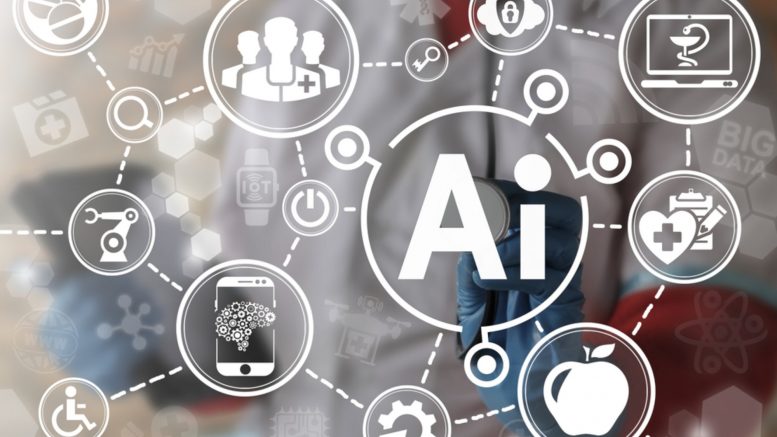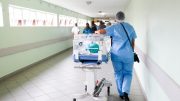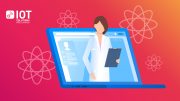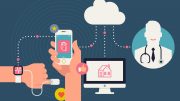By Sangita Singh, EVP, Healthcare and Life Sciences, Infosys
The pace of digital change in the healthcare sector extends right the way across the spectrum – from the development of new medicines and treatments to the frontline delivery of emergency and outpatient care. However, it is at the frontline where the most significant advances are being found and where benefit is registering in the greatest volume.
Healthcare providers worldwide are among the most prolific generators of data, from patient records to drug trials. With this data increasingly being digitised as part of electronic patient record initiatives, it is getting easier for practitioners and their industry partners to leverage data to make more informed care decisions.
This data is already used in a number of ways to understand historic events and help predict and understand current and future trends. Paired with the latest artificial intelligence (AI) algorithms, this data can drive intelligent decision-making and reasoning, speeding up the analysis of data and providing healthcare organisations with more informed insight on which to make decisions such as where to build hospitals and what equipment to invest in.
Combining AI and the IoT in healthcare
Critical to the digital transformation of modern healthcare has been the rise of the internet of things (IoT), in regard to healthcare delivery and monitoring. An additional source of rich data, healthcare IoT devices also allow for more connected, remotely managed healthcare equipment that can directly feed data not only into individual treatment plans and patient records, but into larger AI-driven healthcare analytics systems.
Take for example the growth in wearable healthcare devices, from fitness trackers to portable blood pressure and insulin monitors. Demand for IoT devices for wellness management has surged in recent years. In fact, according to data from Global Industry Analysts, the market is set to be worth $4.5 billion by 2020, driven by growing need for more automated management and monitoring of chronic conditions and buoyed by the growing popularity of healthier living. While the US is still the largest market, the biggest growth opportunity lies in Asia-Pacific, which is growing at a CAGR of 23.8%. Increased instances of diabetes, triggered by changes to diet, are the primary driver for this growth.
The growing demand for these devices is for much more than just step counting and simple individual health monitoring. Devices allow for remote and at-home management and monitoring of acute conditions, allowing practitioners to make better decisions and risk assessments. Faster change to treatments based on faster diagnosis of changing conditions can ultimately deliver a lower cost of care, enhanced quality of care and improvement in patient engagement.
Keeping control of inventory
Beyond the patient, the IoT is also at the forefront of improving inventory management. Tracking the whereabouts of expensive, reusable medial equipment both in hospitals and in patients’ homes has the potential to drastically cut the amount spent on replacing reusable hardware. For example, in the UK the National Health Service (NHS) spends on average £32 on a zimmer frame is £32, £23 per pair for elbow crutches and £6 for a wooden walking stick. Last year the NHS in England spent around £18 million on crutches, walking sticks and frames, according to industry sources.
Using RFID technology, hospitals and equipment rental companies can manage and track their inventories of medical equipment, as well as other supplies such as drugs and disposables. Again, this strategy will result in lower inventory carrying costs and overall variable costs across healthcare bodies, as well as reducing waste, as many un-returned or misplaced items simply end up in landfill.
Remote data and accurate assessment
Advances in connectivity and a growing demand for at-home and out-patient care is also driving the use of devices that can remotely monitor a patient. Private medial insurers are already using two-way smartphone apps to connect customers with GPs for initial consultation and diagnosis, as a lower-cost option to avoid an unnecessary in-person consultation for a minor ailment. The next steps for this is to be able to share vitals with the healthcare practitioner in real-time, enabling multi-faceted telehealth services using inexpensive devices to interface users together and transmit the data from connected devices such as pacemakers, monitors, ECG machines and other devices.
Furthermore, this ability to share vital health data in real-time can also be used by healthcare insurers to make more informed risk assessments when determining insurance premiums and incentivising customers to be healthier.
Overcoming security concerns
With so much healthcare data already digital, and more being added thanks to the growing use of connected devices and AI systems to inform decision-making, there are obvious user and organisational concerns about data security.
In particular, whether data can be intercepted in-flight, and whether devices can be hacked and manipulated, creating an immediate life-threatening risk to the patient. As we are in the infancy of digital healthcare, single industry-wide standards have yet to be established. There is not a consistent communication protocol like EDI or HL7 that is governing these devices and the information they collect and broadcast, yet.
In addition to this, the collection of data will require tighter regulation and uniform processes, else data is at risk of being retained in silos, limiting its value and potentially exposing the healthcare provider or other organisation to regulatory penalties. For example, the forthcoming European Union General Data Protection Regulation (GDPR) carries significant financial penalties for the misuse of data, as well as for failure to find and purge data on request. The proliferation of IoT and other data driving digital healthcare initiatives could fall foul of this if is not integrated into a single place, or at least a smaller, more manageable number of silos.
Ultimately, the feed of IoT medical data into healthcare bodies and treatment processes is not enough on its own to effect meaningful change and to lower the cost of healthcare delivery. In order to verify the data from IoT devices such as wearables, this fresh stream of real-time and near real-time data needs to be interpreted alongside other sources. These include historical patient record data, drug trial data, lifestyle and lifespan data for the given region and other environmental and societal variables. This is in order to gain the clearest view of the patient and the potential for future healthcare needs, as well as current issues.




